History
Our Timeline
The Schwarzwälder Apparate-Bau-Anstalt (Saba) is a German brand for electronic equipment founded in 1923 at Triberg im Schwarzwald (Black Forest), present-day Baden-Württemberg.

Saba is at first a clock making company founded in Triberg (Blackforest) in 1835 by Joseph Benedikt Schwer.
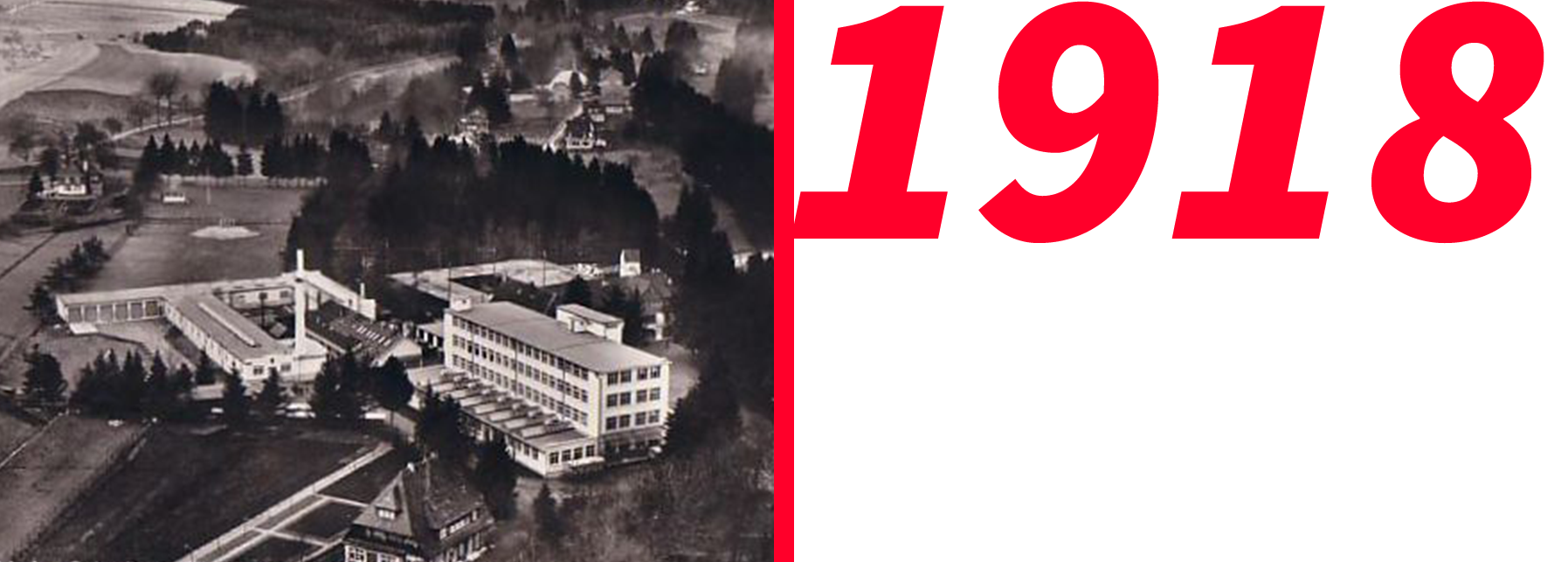
The company transfers its activities to Villingen (Black Forest) in order to keep expanding and started producing component parts for broadcast receivers. Soon, the founder’s grandson, Herman Schwer starts the manufacturing of headphones and radio parts. And from there he develops a full products range, from radio components and accessories to radio receivers.
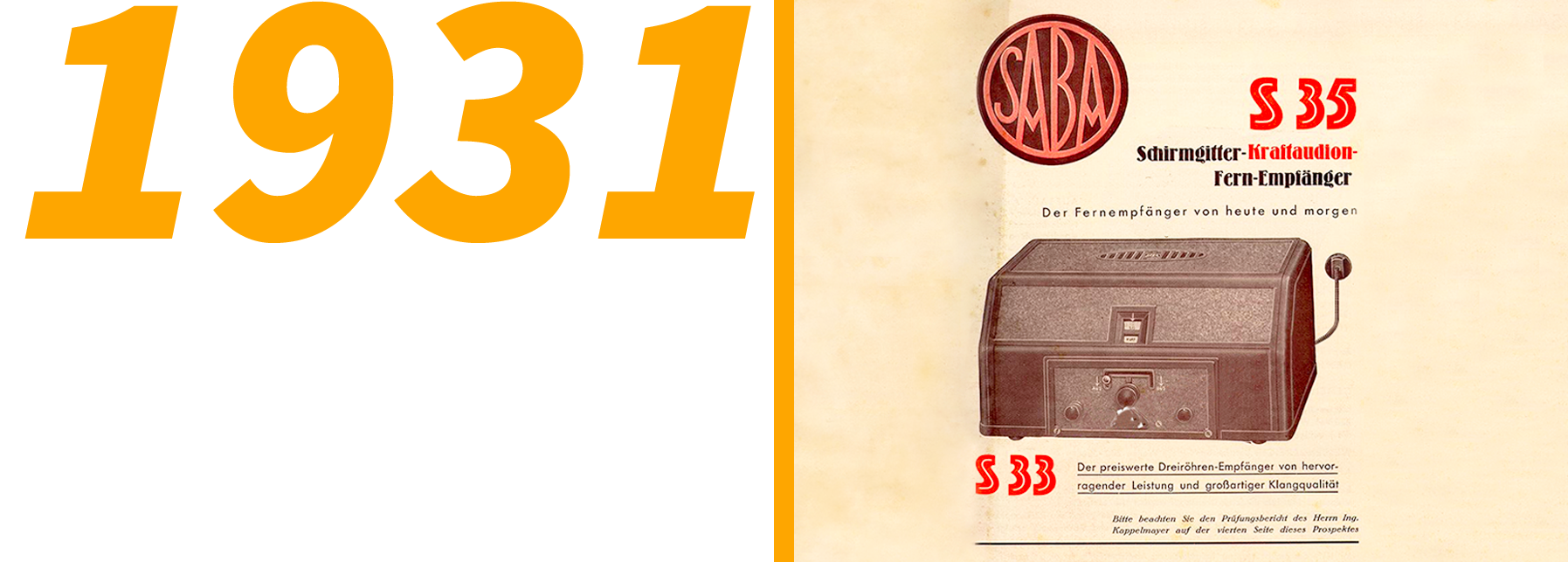
A remarkable year in term of sales. In a single year were produced more than 100,000 units of the legendary Saba Radio Type S-35. Saba introduces for the first time on the market dynamic loud-speakers which became soon a best seller.
The company keeps growing and, a few years later, reaches 800 employees and develops the world’s first radio receiver with radio programs search and automatic fine-tuning adjustment in all bandwidths. Quickly, the daily manufacturing capacity exceeds 1,000 units per day.

Manufacture and marketing of refrigerators, including the “Saba K 50” model.

At the consumer electronics fair in Berlin (IFA), Saba presents a demonstration of its first television.

First production in large quantities of the new television set model “Saba Schauinsland W II”.
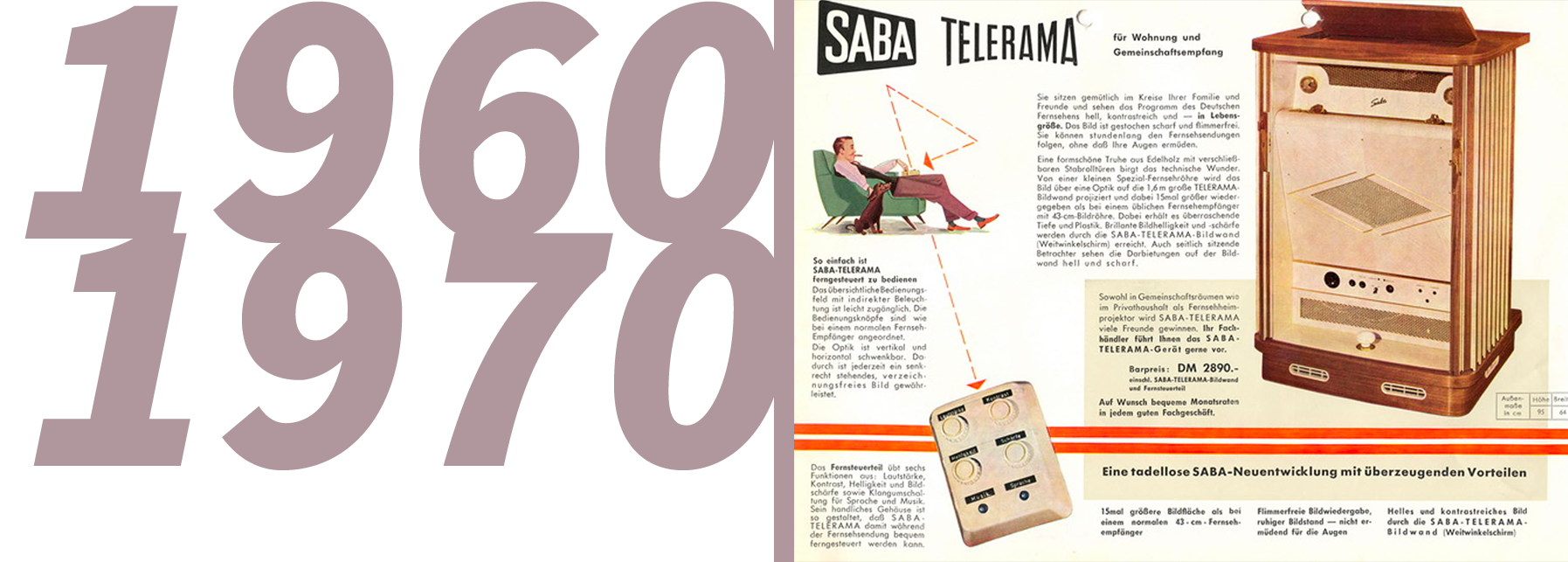
Saba successes enabled the company to manufacture audio tape recorders too in a new factory in Friedrichshafen.
The brand Saba was and still is a synonym of innovation in term of technology and materials. It introduced the large TV screen Projector ‘Telerama’ on the market. And it launched the first Color TV set with wireless remote control.

Saba manufactures and sells its first PAL color televisions.
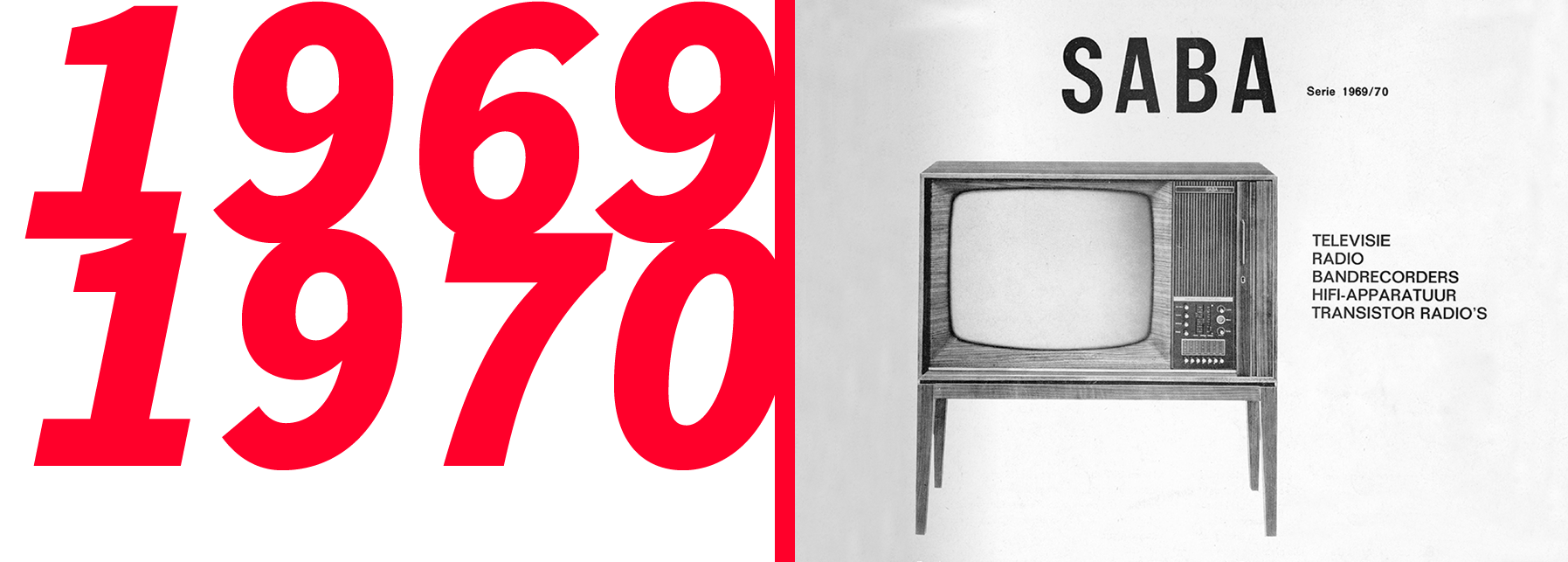
In 1968 the American Company, GTE International, purchases 85% of Saba’s capital in order to create synergies with Sylvania product line.
Saba build the first Hi-fi Audio set with wireless remote control and introduces a failure diagnosis system, which enabled the recognition of failures and therefore significantly simplifies the after-sales service process. All these innovations made of Saba a major player of the Consumer electronics industry.
With a strong focus on customer satisfaction, the company introduces a 24-hour product operating life test. Each TV and Hi-fi Audio product is submitted to this test. Thanks to this innovation, 70% of early product failures were thus eliminated.
Moreover, Saba launches the very first fully modularized Color TV set on the market, built only of pluggable sub-assembly boards. Those are only a few examples of the most significant achievements reached by Saba towards a further simplification of after-sales services.
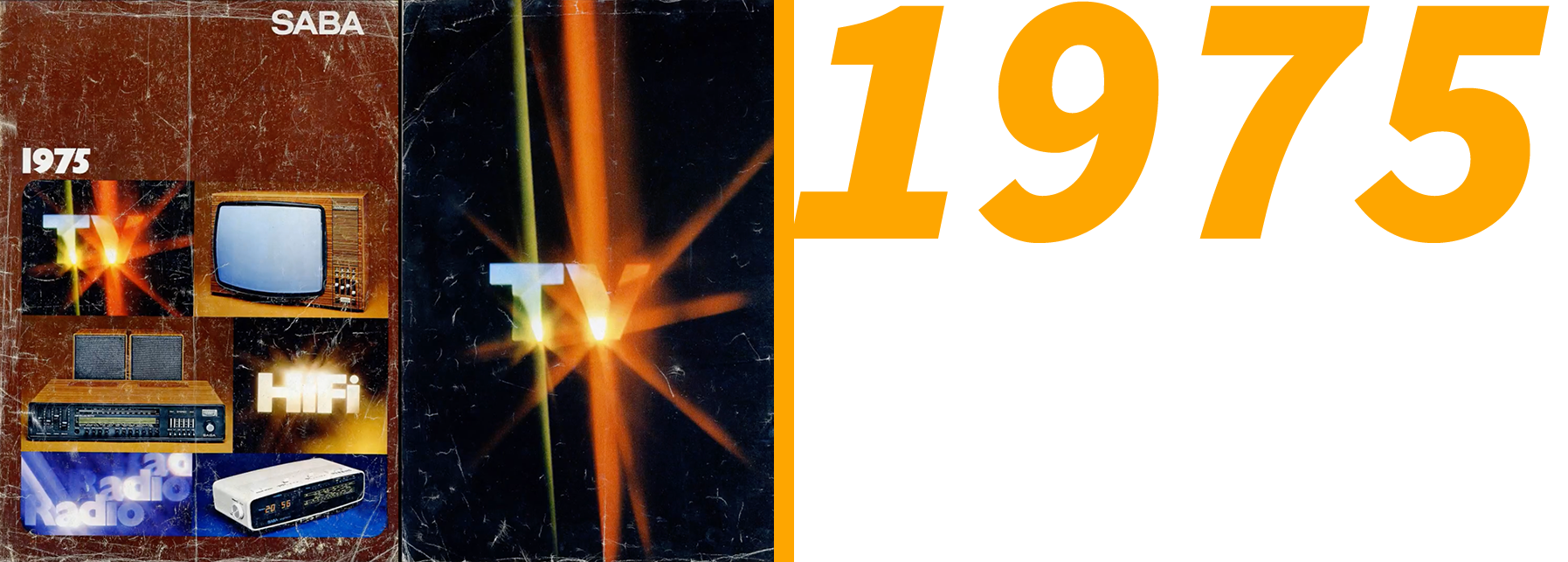
Saba become a 100% subsidiary of the American company GTE International.
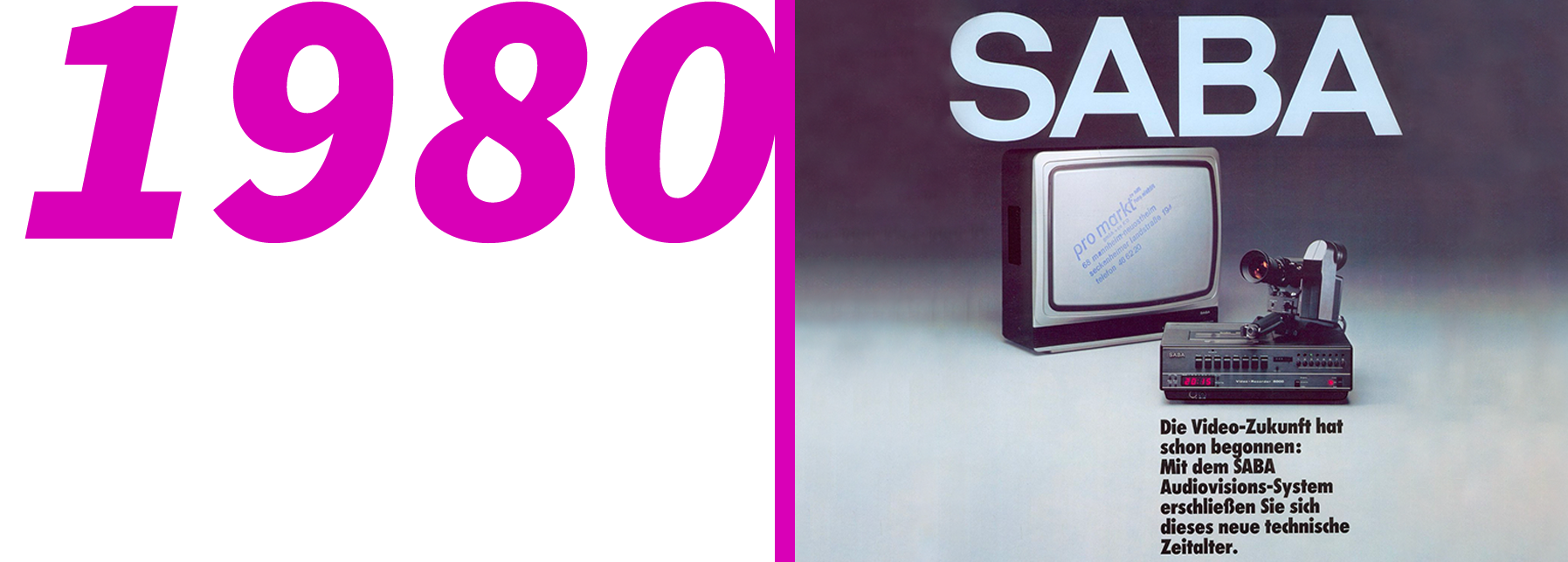
GTE exits the consumer electronic distribution.
Then, the European consumer electronics Group “Thomson-Brandt” (with Headquarters in Paris) purchases Saba manufacturing and distribution.
The brand became one of the market leaders in video and creates the first German video training school.
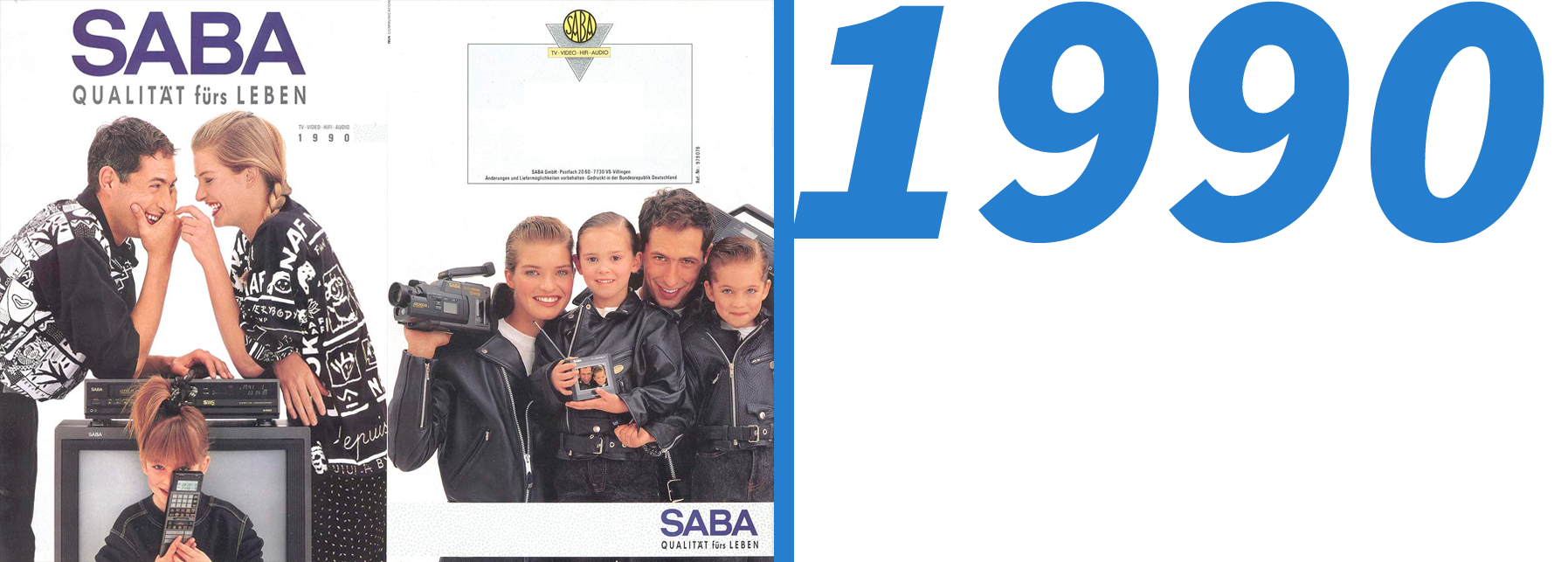
Saba launches the first portable LCD TV set and is repositioned as a brand not only for mainstream families, but also for younger couples, ecologically minded, with a reference to nature and a taste for innovative design.
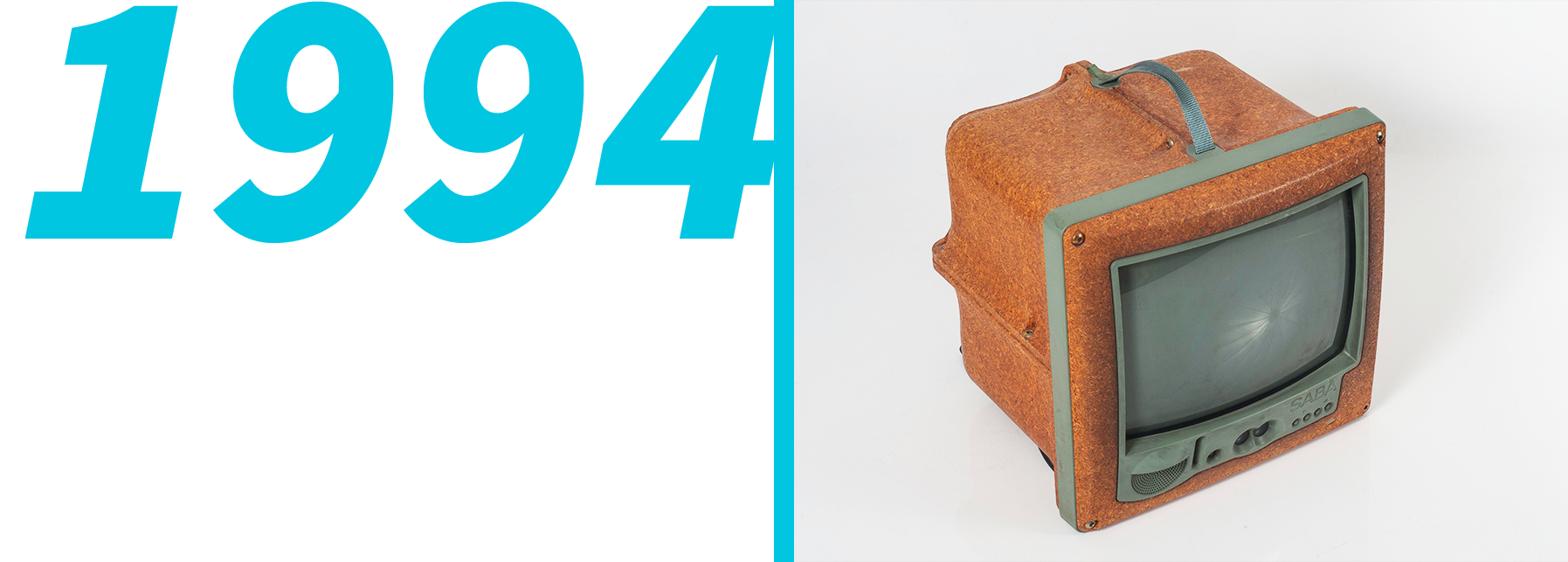
Saba launches several products designed by the well-known Philippe Starck (at the time, Thomson Consumer Electronics Chief Creative Director), with, among others: “Jim Nature” (1994), a portable Television set made of recycled high-density wood with a unique design, now exhibited as example of 20th Century design in the Museum of Modern Art (MOMA) of New York, and “Oye-Oye” a small Radio with an innovative form factor.

Technicolor (former Thomson Group) starts to develop a trademark licensing business for Saba brand on various categories: television, audio video, small and large appliances.


